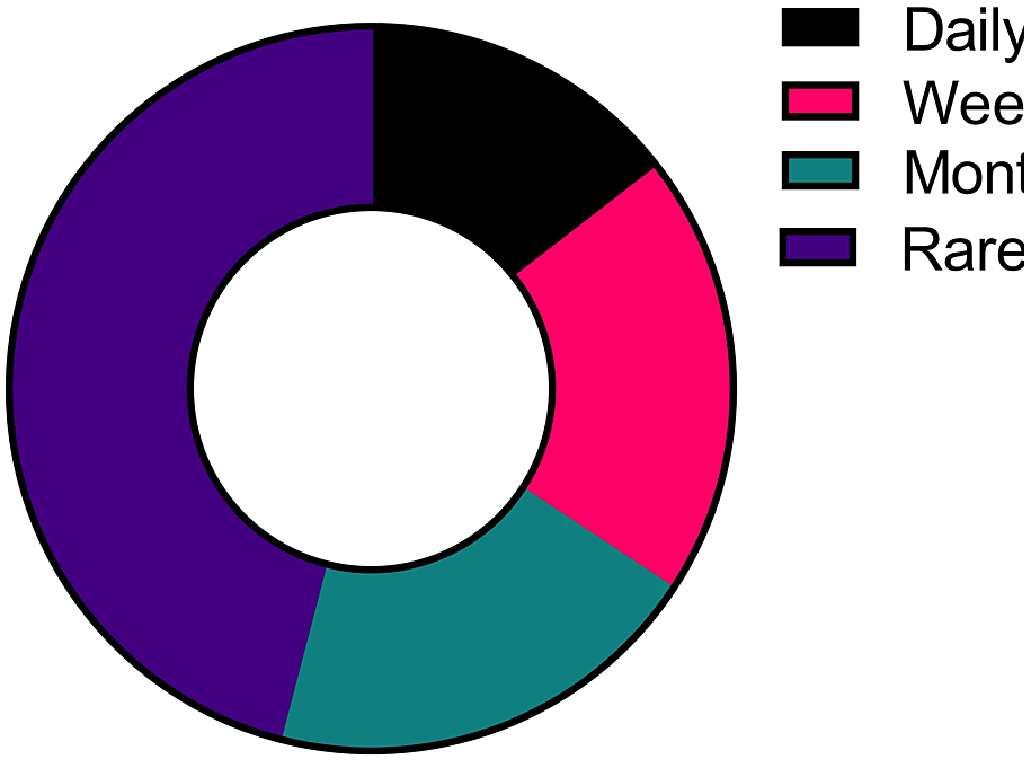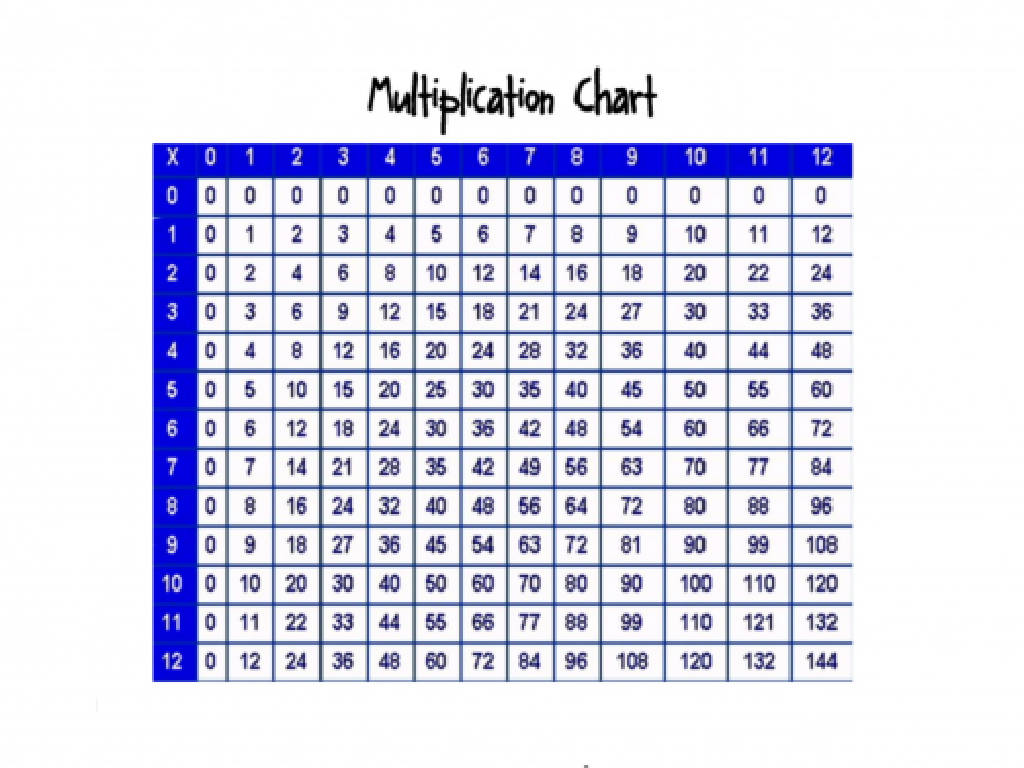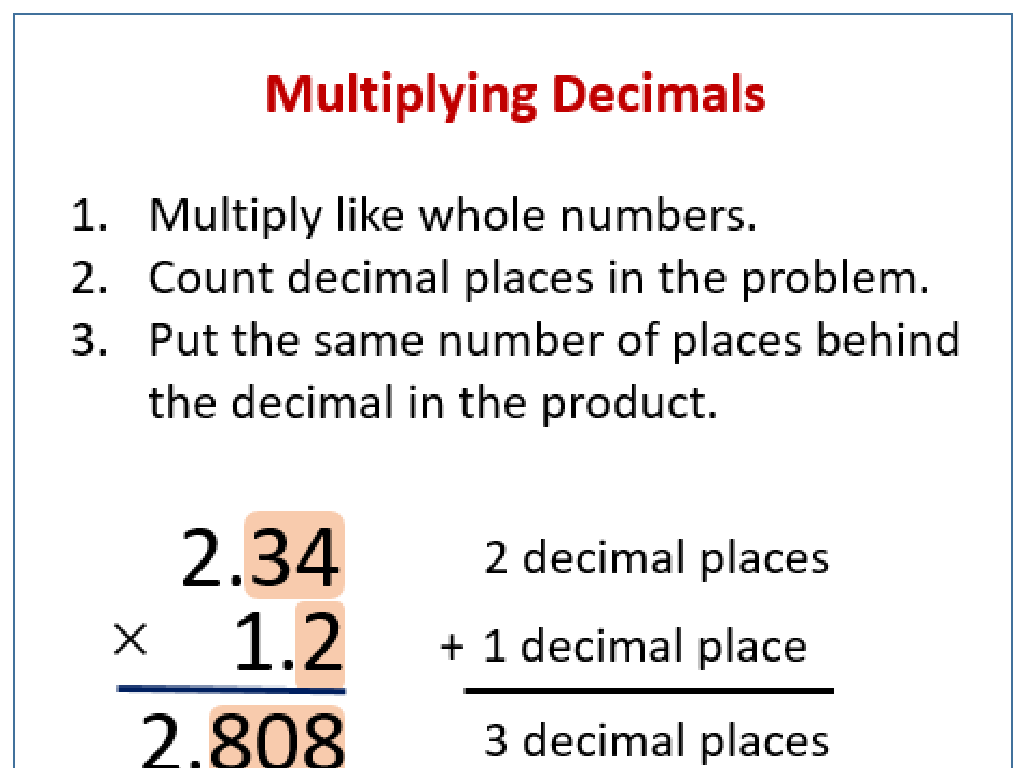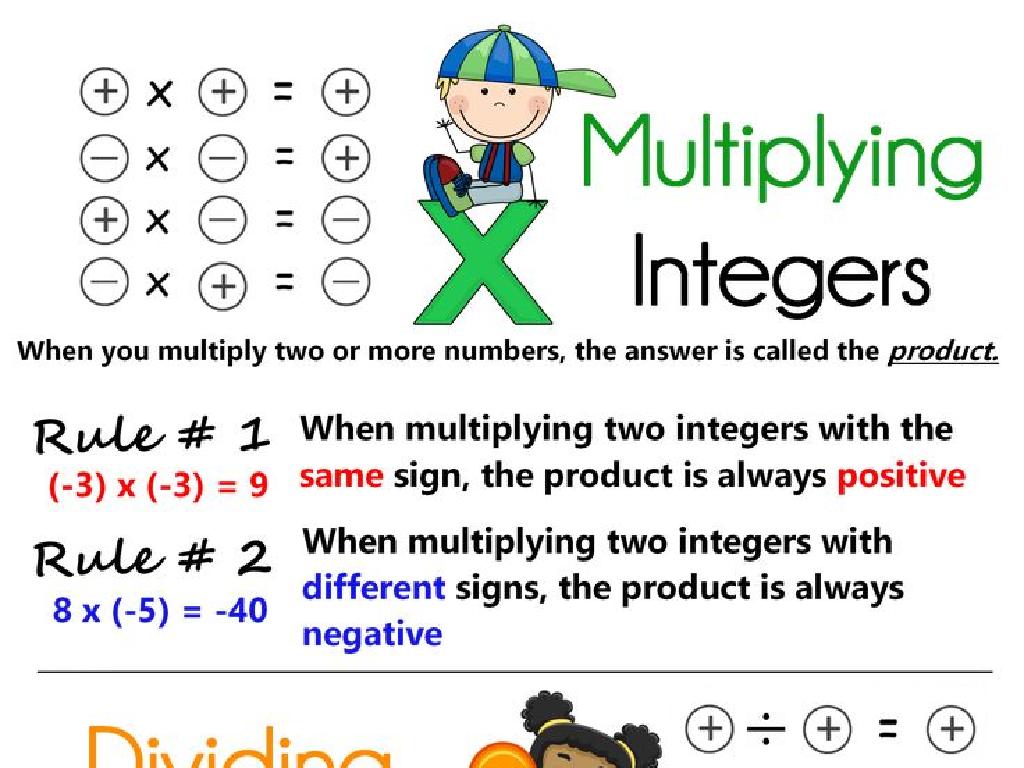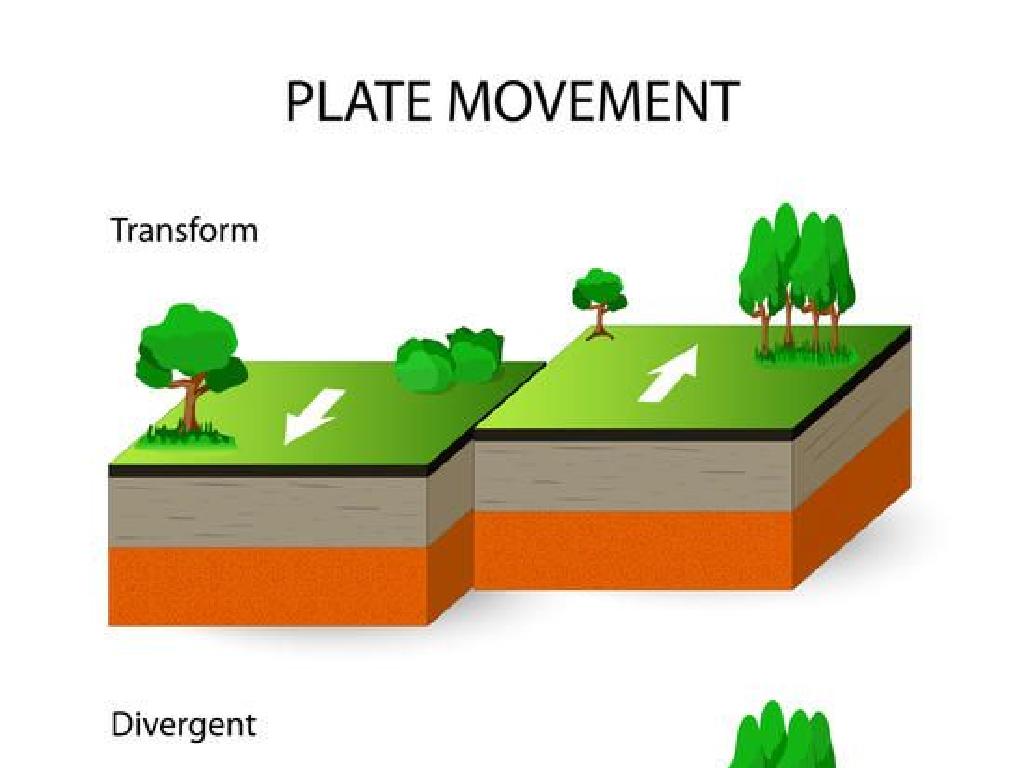Identify Shapes Traced From Solids
Subject: Math
Grade: Second grade
Topic: Three-Dimensional Shapes
Please LOG IN to download the presentation. Access is available to registered users only.
View More Content
Welcome to 3D Shapes!
– Greetings, young mathematicians!
– What are 3D shapes?
– Objects with length, width, and height
– 3D vs. 2D shapes
– 2D is flat, 3D has depth
– Identifying shapes from solids
– Tracing faces to see 2D shapes
|
Begin the class with a warm welcome and introduce the concept of three-dimensional shapes, emphasizing that unlike 2D shapes, 3D shapes have depth in addition to length and width. Use everyday objects like boxes (cubes) and balls (spheres) to illustrate the concept. Explain that 2D shapes are flat and can be drawn on paper, while 3D shapes are solid objects that can be held. To help students identify shapes traced from solids, demonstrate by tracing the faces of various 3D shapes onto a flat surface, showing how a 3D shape can be broken down into several 2D shapes. Encourage students to think of 3D shapes they encounter in their daily lives and what 2D shapes they might see if they traced the faces of these 3D objects.
Exploring 3D Shapes Around Us
– Real-life 3D shape examples
– A ball is a sphere, a box is a cube
– Classroom object-shape match
– Find objects that look like cubes, spheres, etc.
– Discuss shapes of everyday items
– How is a cereal box like a rectangular prism?
– Recognize shapes in different orientations
– A shape can look different from various angles
|
This slide aims to help students identify and connect three-dimensional shapes to objects they see every day. Start by showing familiar items such as a ball (sphere) and a box (cube) and discuss their shapes. Then, engage the students by asking them to look around the classroom and name objects that match 3D shapes like cubes, spheres, cylinders, and cones. Encourage them to think about the shapes of items they use daily, like cereal boxes, cans, and balls, and how these shapes look from different perspectives. This activity will enhance their spatial awareness and ability to recognize 3D shapes in various orientations and contexts.
Identifying 3D Shapes and Their Traces
– Learn 3D shape names: cube, sphere, cylinder, cone
– A cube is like a box, a sphere is a ball, a cylinder is like a can, and a cone is like a party hat.
– Discover each shape’s unique features
– Cubes have 6 square faces, spheres have no edges, cylinders have 2 circles, cones have 1 circle.
– Trace 3D shapes to reveal 2D outlines
– When you trace the bottom of a cylinder, you get a circle.
– Understand the connection between 3D and 2D shapes
– This helps us recognize 3D shapes in everyday objects by looking at their 2D traces.
|
This slide introduces second-grade students to the basic three-dimensional shapes they encounter in their daily lives. Start by presenting the names and pictures of each 3D shape: cube, sphere, cylinder, and cone. Discuss the characteristics of each shape, such as the number of faces, edges, and vertices. Use physical models if possible to show how tracing the base of these shapes onto paper reveals a two-dimensional shape. For example, tracing the base of a cylinder shows a circle. This activity will help students understand how 3D shapes can be represented in 2D forms and how to identify shapes in the world around them. Encourage students to bring objects from home that match these shapes for a show-and-tell session.
Tracing 3D Shapes to 2D
– Trace the base of a 3D shape
– Place a 3D shape on paper and draw around it to see its 2D shape
– Relate 2D shapes to 3D objects
– A 3D shape’s base can be a circle, square, etc., when traced
– Example: Trace a can’s bottom
– A can’s bottom makes a circle when traced onto paper
– Understand 3D to 2D conversion
|
This slide aims to help students understand the relationship between three-dimensional shapes and the two-dimensional shapes they can make. Start by demonstrating how to trace the base of a 3D object, such as a cube, onto paper to reveal a 2D shape. Explain that the face of a 3D shape is a 2D shape. Use everyday objects like a can to show that when we trace the bottom, it creates a circle, which is a 2D shape. This activity will help students visualize the concept of dimensions and how shapes can be represented in different forms. Encourage students to bring objects from home for a hands-on tracing activity in the next class.
Shape Tracing Matching Game
– Engage in a matching activity
– Match 3D shapes to 2D outlines
– Find the flat shape that fits the bottom of the solid
– Boost critical thinking
– Enhance observation skills
|
This interactive matching game is designed to help students recognize the relationship between three-dimensional shapes and their two-dimensional counterparts. Set up stations with various 3D shapes like cubes, spheres, cones, and cylinders, and provide corresponding 2D outlines on paper. Students will observe each 3D shape and match it to its 2D trace by visualizing the shape’s base. This activity promotes critical thinking as students deduce the 2D shape from the 3D object and enhances their observation skills as they examine the characteristics of each solid. Possible variations include using real-life objects, creating a timed challenge, or having students draw the 2D traces themselves.
Let’s Practice Tracing 3D Shapes!
– Receive your 3D shape worksheet
– Follow along the tracing exercise
– We’ll trace shapes together step by step
– Understand shapes through practice
– Recognize shapes by lines and curves
– Get ready for hands-on activities
|
This slide is designed to facilitate a hands-on tracing activity for second-grade students to help them identify shapes traced from solids. Distribute worksheets with various 3D shapes to each student. Guide them through the process of tracing these shapes to understand their outlines. Emphasize the importance of following along during the tracing exercise to recognize the shapes by their lines and curves. After tracing, engage students with hands-on practice using physical 3D objects to reinforce the concept. Encourage students to discuss the shapes they see and how the 2D traces relate to the 3D solids. Prepare to assist students individually and offer praise to boost their confidence as they grasp the concept of three-dimensional shapes.
Class Activity: Shape Hunt Adventure
– Let’s go on a Shape Hunt!
– Find and trace 3D objects
– Look for cubes, spheres, and cylinders around the room
– What shapes did you discover?
– Share your shapes with the class
– Discuss the different shapes we all found
|
This interactive activity is designed to help students identify and understand three-dimensional shapes by searching for them in their immediate environment. Encourage the students to explore the classroom and find everyday objects that match the shapes they’ve learned about, such as cubes, spheres, cylinders, cones, and pyramids. Provide them with paper and crayons or pencils to trace the base of these objects. Once they have completed their Shape Hunt, ask them to present their findings to the class, discussing the shapes they found and where they found them. This will help reinforce their learning and allow them to visualize the 3D shapes in a 2D form. Possible objects they might find include a ball (sphere), a box (cube), a can (cylinder), etc. Make sure to supervise the activity to ensure safety and provide assistance when necessary.
Review and Reflection: 3D Shapes
– Recap today’s 3D shapes lesson
– Share your favorite 3D shape
– Is it a cube, sphere, or a cone?
– Explain why it’s your favorite
– Is it because it rolls, stacks, or slides?
– Ask questions or express confusion
|
This slide aims to consolidate the learning from the lesson on three-dimensional shapes. Begin by summarizing the key points, such as the names of the shapes and their characteristics. Encourage students to reflect on the lesson by asking them to name their favorite 3D shape and explain their preference, which could be based on the shape’s properties or their personal experiences with it. This activity helps to personalize their learning experience. Lastly, open the floor for any questions the students might have, providing clarification where needed to ensure understanding. This interactive conclusion to the lesson will help reinforce the concepts and ensure that the students are ready to move on to the next topic.
Homework Challenge: Exploring 3D Shapes
– Find 3D shapes around your home
– Draw each shape you find
– Note the 2D shapes you see
– Look for circles, squares, etc. on the surfaces
– Share your drawings in class
|
This homework task is designed to reinforce the concept of three-dimensional shapes by having students search for real-life examples in their home environment. Encourage them to look for cubes, cylinders, spheres, and other 3D shapes. They should draw these objects and try to identify the 2D shapes that make up the faces of these 3D objects, such as a circle for the base of a cylinder or squares for the faces of a cube. In the next class, create a gallery of their drawings to discuss the variety of shapes found and the different 2D shapes that were identified. This activity will help students recognize 3D shapes in their surroundings and understand the relationship between 2D and 3D shapes.

